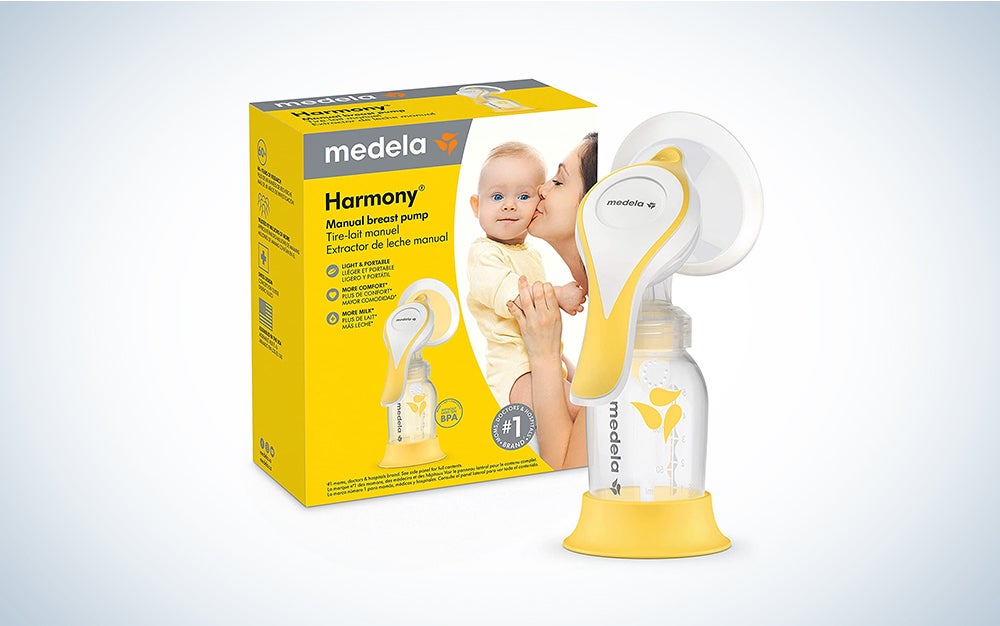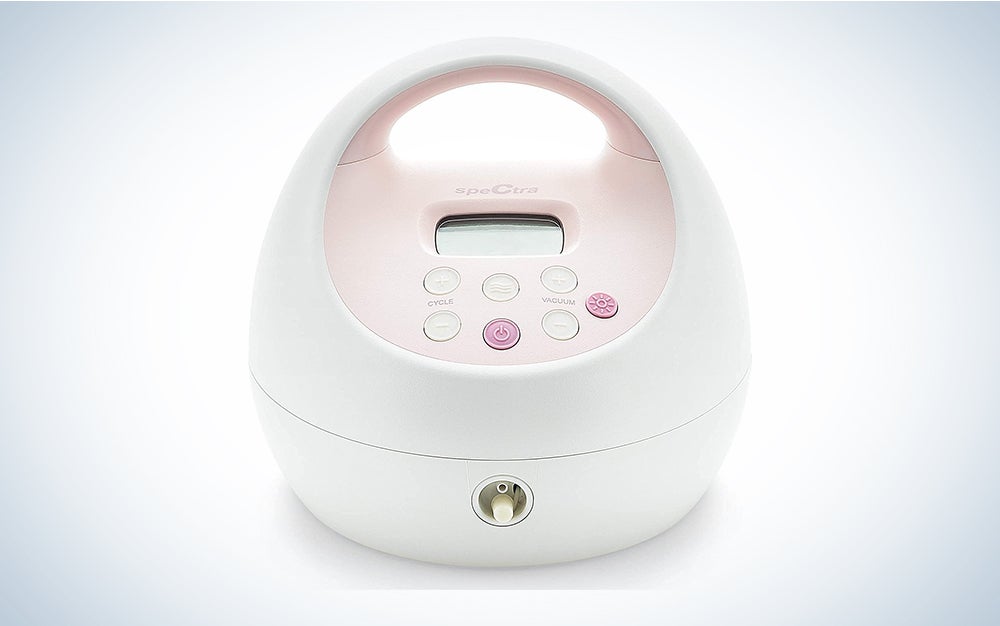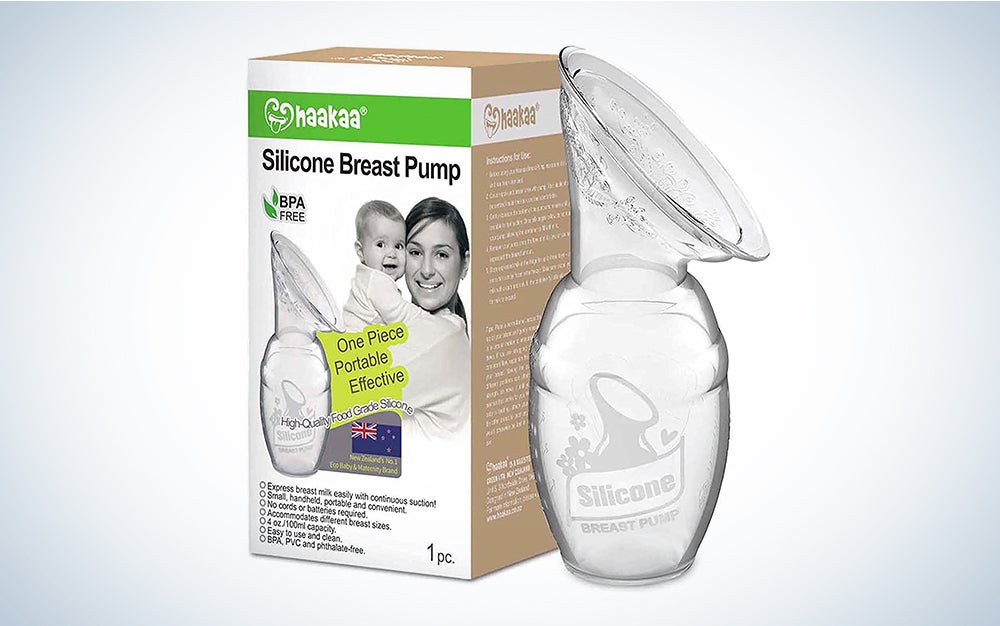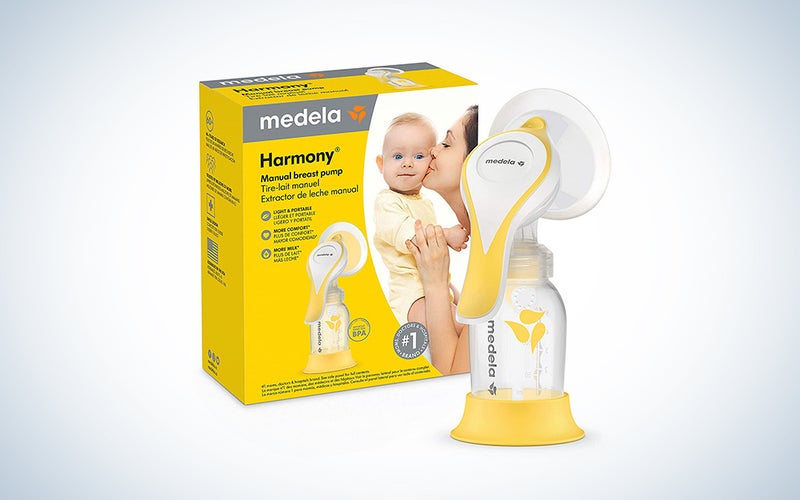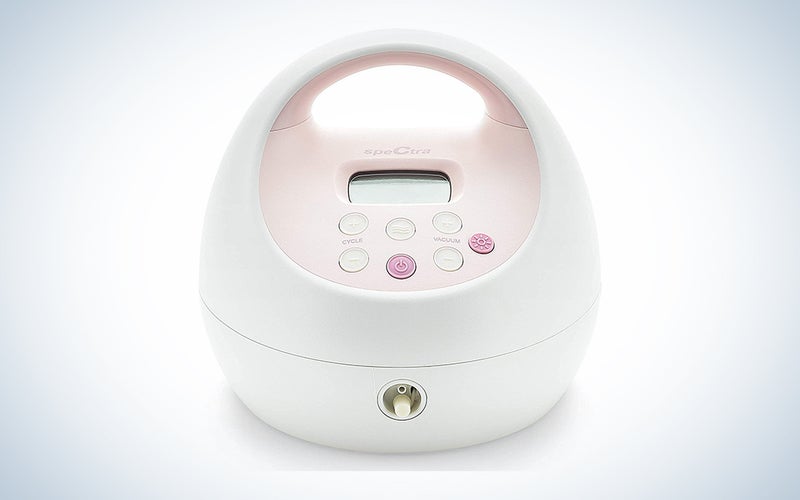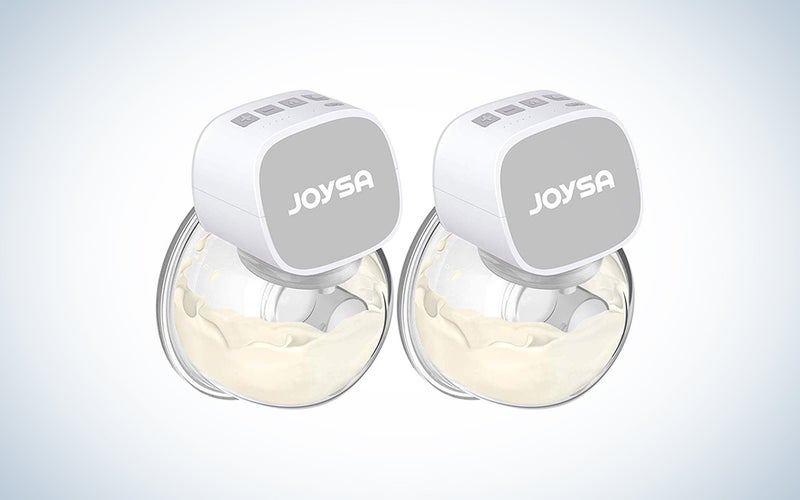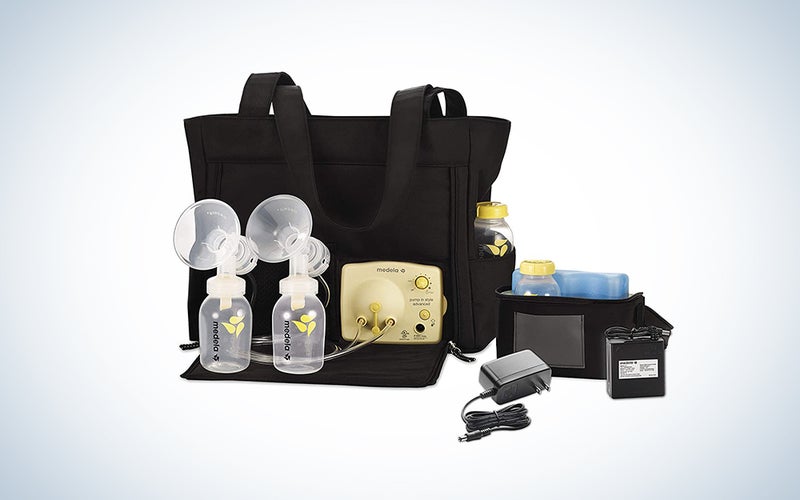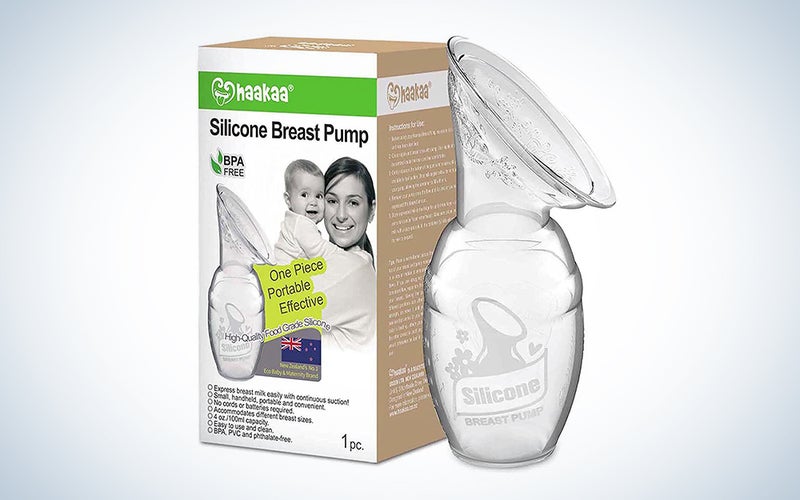We may earn revenue from the products available on this page and participate in affiliate programs. Learn more ›
Your sweet bundle of joy comes with a steady appetite for breast milk. Nature knows what it’s doing because breast milk contains all of the nutrients and antibodies babies need. Today, when mom’s not available, a breast pump can help moms make sure there’s a supply of milk on hand. At the same time, pumps help moms keep their milk supply flowing if they can’t be around at feeding time.
Breast pumps help moms create an emergency stash of milk for other caretakers or just enough for an extra bottle at night. They’re made in manual, electric, single, double, wearable, and hands-free designs. Pumps have become baby registry must-haves for many moms on the go. There’s a lot to take in when picking the best breast pump for you. Take a look at our guide and product recommendations to help you narrow down your options.
- Best manual: New Medela Harmony Manual Pump
- Best double electric pump: Spectra – S2 Plus Electric Breast Milk Pump
- Best wearable: JOYSA Double-Electric Breast Pump
- Best pump and feeding system: Medela Pump in Style Advanced Pump
- Best budget: Haakaa Manual Pump
The best breast pump basics
Breast pumps help keep up your milk supply when you’re away for a feeding or two. They also let you build up a refrigerated or frozen supply of meals for the baby. Some moms pump at work to supply meals in their absence. Other moms regularly pump once or twice a day at home to provide a nighttime meal for their partner to feed the baby. Sometimes it’s convenient to have an extra meal on hand so mom can get a few hours to herself. They can also help provide the best nutrition if the baby has feeding issues that prevent normal breastfeeding.
Breast milk has to proceed through what’s known as the let-down reflex before it can flow. The sound and smell of a baby can be enough to start the process. However, when the baby isn’t around, the motion of the device can help with let down, too. The more natural the movement and suction, the easier it is for a pumping mom. The best breast pumps mimic a two-stage infant feeding pattern. Some models do that with two-stage suction, and others through the pump’s design.
Manual breast pumps for occasional use
Manual pumps are the simplest and least expensive option. Designs vary from more technical models with a handle and valve to a single piece that relies on bulb suction. These pumps are also lightweight and portable. They’re easy to take along on a short trip to maintain your milk supply. What’s more, some manual pumps are designed to fit specific bottles, while others store the milk until you’re ready to pour it into a storage container.
However, manual pumps take longer to trigger let-down and empty the breast. They’re best for moms who only pump occasionally. For example, if you want to have an extra bottle of breast milk available for a nighttime feeding or a babysitter, a manual pump may be all you need.
Best manual: Medela Harmony Manual Breast Pump
Medela
The Medela Harmony Manual Pump features a flex technology that helps the flange fit over the breast more comfortably. The fit helps create comfortable suction to promote let-down. Medela uses a two-phase suction technology to mimic infant feeding patterns. The pump also includes a stand so you can set it down on the counter without it tipping over. Finally, this model fits with the Modelo feeding system, which includes compatible bottles, nipples, and storage containers.
Electric pumps for greater power
Electric pumps step the pumping power up a notch. Whether it’s a single or double pump, these models will out-pump a manual model every time. Some electric models offer different suction levels, speeds, and motions to help customize the experience and enhance let-downs.
Electric models are corded or battery-powered. Battery-powered models create better portability and less clutter while you pump. However, corded models tend to be more powerful and won’t lose power mid-pump session.
Many electric pumps can function as a single or double pump. Double pumps empty both breasts at the same time, cutting pumping time in half. They’re a great option for moms who have limited time to pump. If you’re all about efficiency, an electric double pump will do the job. However, double electric pumps are the most expensive models on the market.
Best double electric pump: Spectra – S2 Plus Electric Breast Milk Pump
Spectra
The Spectra – S2 Electric Breast Milk Pump provides natural suction motions. However, you can adjust both the motion and the suction level for better, more comfortable control. This unit can be used for single or double-pumping. A closed system prevents milk from coming into contact with the pump, making this model simpler to sterilize. The Spectra also has an auto-timer and backflow protector to make pumping that much easier.
Wireless and hands-free pumping
Moms end up pumping in all kinds of situations. Battery-powered, wireless pumps take some of the clutter out of the process. They’re more portable and can be used while commuting or at the office without requiring an electrical outlet. These smart breast pumps can also be hands-free if you have a breat pump bra that holds the pump in place. Some are designed specifically as wearable pumps that let the wearer go about their business.
Hands-free pumping offers some distinct advantages. You can keep going about your work, drive, or attend to other children. If you want something that’s ultra-discreet, look for a model that’s quiet, too.
Best wearable: JOYSA Double-Electric Breast Pump
JOYSA
The JOYSA Double Electric Pump discreetly fits inside a standard nursing bra. There are no wires or tubing to get in the way. Milk flows into a storage container attached directly to the pump. Each pump has five adjustable suction levels and charges using a standard USB cord.
Breast pumps with a feeding system
A feeding system includes a pump that deposits milk in either storage containers or bottles that are compatible with a larger feeding system. The same manufacturer will also make bottles of various sizes, nipples, covers, and possibly storage bags that are all compatible with the other pieces within the system.
A feeding system is typically more expensive than a standalone pump. However, you get an entire system that fits together. The downside to a feeding system comes down to the baby. Sometimes babies are picky about bottles or nipples. They may refuse to eat. If they don’t like the equipment that comes with the breast pump, you may have to get another one that’s not compatible with the previous feeding system.
Best pump and feeding system: Medela Pump in Style Advanced Breast Pump
Medela
The Medela Pump in Style Advanced Pump includes a long list of features. It can function as a single- or double- breast pump and is designed with technology that mimics an infant’s natural feeding patterns. You can adjust suction speed and intensity for more comfortable milk expression. This model also includes a tote with a portable battery pack, removable cooler bags, and enough space to store extra bottles, nipples, and lids.
Pumping on a budget
Electric pumps can cost quite a bit. However, that doesn’t mean you can’t get an effective pump for half as much. At this lower price range, the pump doesn’t typically offer adjustable suction or speed. It may only have one container to hold milk and may or may not have a valve and handle for faster pumping. What’s more, at this price, the pumps can only empty one breast at a time.
Best budget: Haakaa Manual Breast Pump
Haakaa
The Haakaa Manual Breast Pump is made from a single piece of BPA-free silicone. It uses a manual bulb-suction action to express milk. There’s no valve or handle, which makes cleaning pretty simple. What’s more, the pump comes with a lid that goes directly on the pump, which also stores the milk until it can be poured into a different container.
FAQs
Q: How do I choose a breast pump?
When you’re choosing a breast pump, consider how often and where you’ll need to use the device. A mom who works eight-hour days in an office may only have a few breaks throughout the day to pump. In this case, investing in a double electric pump makes sense. It cuts down on the time that mom is pumping and empties each breast with efficiency.
However, some moms may prefer to pump at their desks or while they drive. A wearable pump that discreetly fits inside a nursing bra fits within this mom’s lifestyle. Moms who are on the go or who will only pump occasionally may want a single battery-powered pump or manual pump that fits inside a purse or backpack.
Q: When should I buy a breast pump?
There are two schools of thought when it comes to when you should buy a breast pump. There are those who think it’s easier to buy one before the baby arrives. That way, you’re set up and ready to go when the crazy sleepless nights begin. You can pump from the very beginning to help your milk supply come in and offer the baby a bottle if your infant has a hard time latching on at first.
Others feel it’s more effective to wait until after the baby is born. Some babies are picky about bottles and nipples. You may have to try several bottles and nipple brands until you find one your baby will accept. Buying an inexpensive manual pump to use until you know what bottles and nipples your baby prefers could prevent investing in an expensive pump that only works with certain bottles. Once you know what your baby likes, you can splurge for something more expensive (and efficient).
Q: Which is better, electric or manual breast pump?
Electric pumps are faster and more efficient. They also tend to empty the breast better than a manual pump. However, if you’ll only be pumping once a week or on the occasional date night, a manual pump can be comfortable and get the job done.
A final word on shopping for the best breast pumps
The best breast pumps fit comfortably and fully empty the breasts in a reasonable amount of time, which can be a lifesaver for busy moms. Adjustable suction and speed can make the process more comfortable and efficient. Look for a model that fits within your budget but also meets your needs. Consider how often, when, and where you’ll pump to find a pump that fits your pumping needs and lifestyle.

